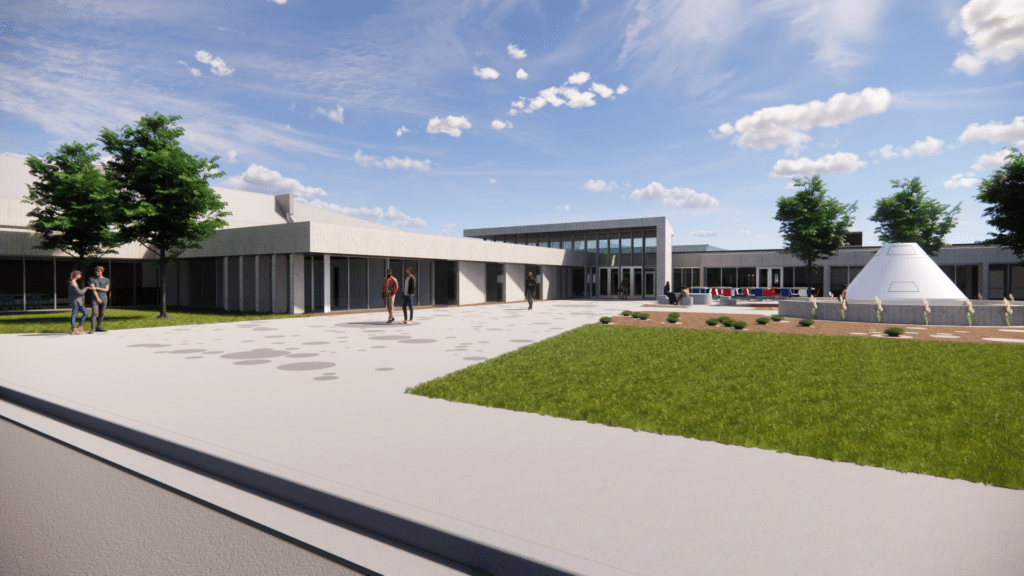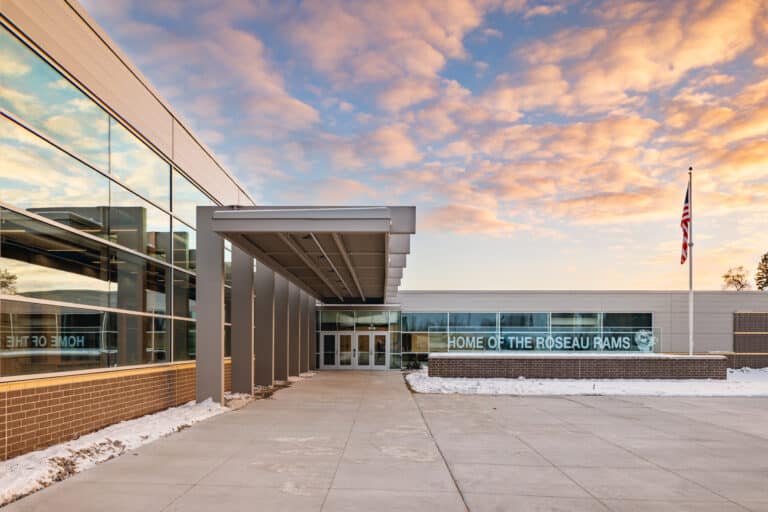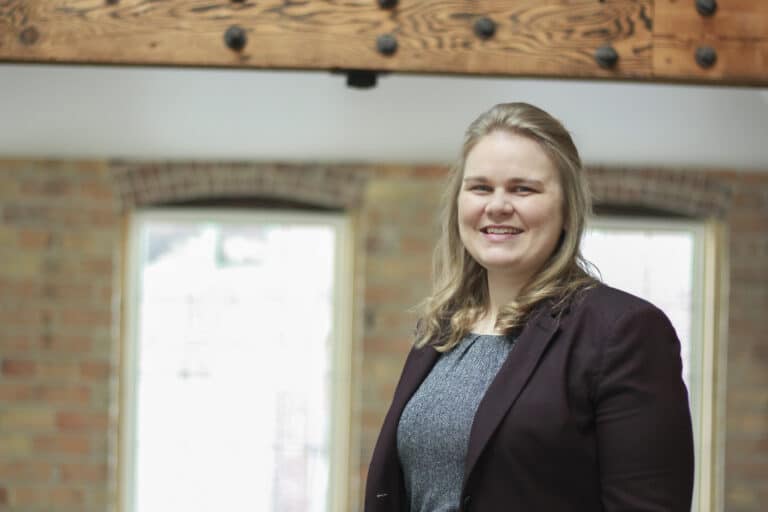More than eight years ago, voters in the St. Cloud school district approved a $104.5 million bond referendum for a new St. Cloud Tech High School. The 324,000-square-foot building opened in 2019. Now it’s time for Tech’s aging counterpart, Apollo High School, to get some attention.
On April 8, residents in the district will vote on a $50 million bond referendum to improve safety and upgrade career and technical education spaces at Apollo. Built in 1970, Apollo is the “only school in the district without a secure entrance,” according to the district.
A signature feature of the project is an addition to create a more secure entrance. The addition also requires storm shelter improvements to satisfy recent changes in the building code, said Laurie Putnam, the school district’s superintendent.
“You have to have a storm shelter that can hold your entire school and withstand a two-by-four going at 220 miles an hour. So you can imagine how very expensive that is,” Putnam said.
That’s not the only project in the works. In addition, the school district wants to update some of its aging learning environments, which haven’t kept up with the times. The science labs, for example, are “going on 50 some-odd-years old now. And so there are parts that we need to renovate.”
Separately, in a second question, residents will consider a $15 million request for a new multipurpose athletic facility at Apollo High School.
Pending voter approvals, the district could begin moving dirt for the athletic facility in the winter, and construction at Apollo could begin as soon as school is out next spring, Putnam said. “We would never close Apollo, and we would do that in phases and with an expected completion date of 2028,” she added.
St. Cloud isn’t the only district with school improvements on its to-do list.
Overall, more than $200 million worth of school construction projects will be on the line next month as districts throughout Minnesota seek voter approvals for everything from security upgrades to new career and technical education spaces, according to information from the Minnesota School Boards Association.
In addition to St. Cloud, the Pequot Lakes school district wants $55 million for additional classrooms, safety improvements and career-technical education space. A $6 million, 10-year capital project levy is up for voter approval in a second question.
Also going before voters are safety, maintenance, athletic and career-technical education space fixes in the Nevis school district ($41.55 million), and auditorium, career-technical and security projects in Osakis ($32.6 million), among other projects.
In Osakis, which is about 130 miles northwest of the Twin Cities, the district maintains one main building for all grades.
“We have preschool all the way up to 12th grade. We’re all in one building. We’re right in the center of the community,” said Justin Dahlheimer, superintendent, Osakis Public School Independent District 213.
But some of the spaces, including the 1940s-vintage auditorium, are “old, inaccessible, impractical, and wrong-sized,” according to the district.
“I call it an onion of a building, where parts of it are newer, parts of it are older, and we’re constantly reinvesting in the older parts to expand and potentially get more versatile with the space,” said Dahlheimer said.
The district wants to demolish the old auditorium and replace it with a new 600-seat facility. In addition, among other projects, the district hopes to expand the Career and Technical Education program to “align with student interest and career opportunities.”
If the referendum is successful, next steps will including additional design and planning work in anticipation of a spring 2026 construction start. The district would wrap up construction in time for the 2027-28 school year, Dahlheimer said.
“It’s a three-year process. We have to manage around our instructional schedules, and we have to manage around our school calendar. It’s not an easy endeavor, but the longer we wait and the longer it’s not supported, the harder it’s going to become,” he said.



